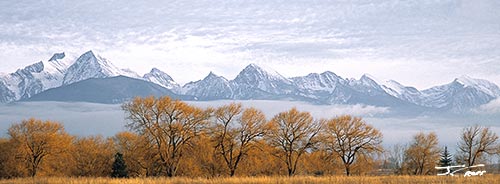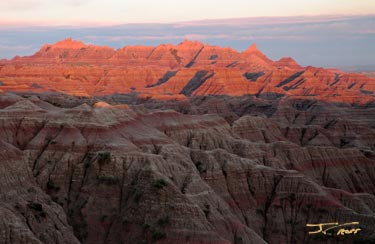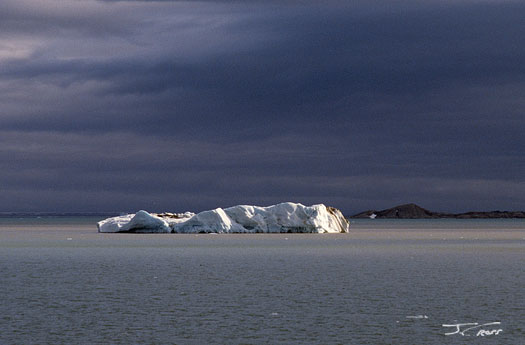www.lumen-perfectus.com
Something for Nothing
"Price is what you pay. Value is what you get." Warren Buffet
Last month I received an e-mail from someone at a mid-size city library. "… Public Library is putting together a website featuring literature from your area. This will go live in a week or so, and we plan for it to be a permanent resource. To complete the site, we are looking for digital photos of three subjects…. We can't pay for use of photos, but we would certainly credit the (photographer)." This was followed by instructions for accessing the not-yet-public site so I could decide if I'd be comfortable having my images displayed with the other material being presented.
Some local painters recently took part in an long-running national "paint-out", and annual event. Participation was quite good for a first-time (in our town) event. I was asked to drive to town on a specific day and hour and to make photographs of the group and the paintings they produced during the event. The photo(s) would be used on the Web site of the parent organization. It was expected I'd do this free and, as it turned out, without being credited for the photo.
A local painter, one who is nationally known and does quite well with his work and with the workshops he teaches, is enamored of one of my photos, one I've printed large and have exhibited in the area several times. He's asked if he can paint the scene in the photo. I appreciate being asked, but the painter was surprised when I suggested a small licensing fee for one-time use.
These are real examples of people who expect something, maybe a little, maybe a lot, for nothing.

A successful local artist wants to make a painting from this photo, but is unwilling to pay a small licensing fee to do so.
I live just outside a small town in rural Montana. City and county governments here are pretty silly affairs, steeped in self-importance and conflicting interests. Officials are often hilarious in their ineptitude, but to make up for that they truly believe the rest of us are blind to their shenanigans. At least they're fun to watch. Thanks in part to this political situation, no organization has adequate funding, as money collected from taxes and levies seems to magically, but consistently, disappear en-route to its intended beneficiaries. To help overcome endless shortfalls, there are constant small auctions, fairs, street markets, concerts, bake sales, film screenings, and community "garage sales" to raise money for the cause or organization du jour. For these I'm regularly asked to donate photos, preferably framed and ready to hang. I'm asked to go places to make photographs of specific objects, scenes, or gatherings; to send jpegs (image files) of my work to be posted on Web sites or used in publications; and to offer classes, workshops, or slide presentations to various organizations. At best I might get a free lunch for my efforts, or a membership in an organization in which I've no time (and often no desire) to participate. Sometimes a bit of publicity, such as having a photo appear in a local newspaper or having my name listed among contributors, comes along with the offer. At the risk of sounding like a mercenary, I've never found any direct benefit from this sort of publicity. I've never made a sale I can say with certainty is tied to any donation I've made.
Sadly, these sorts of requests and expectations are pretty standard fare. I get them from for-profit and non-profit organizations, various social services agencies, government entities, even individuals. The requests come via mail, e-mail, telephone, and face-to-face conversations. I see and understand the need, and while I do what I can to be accommodating, the number of such requests far outstrips my capacity to work for free.
It Only Looks Easy
Why are artists so often asked, sometimes expected, to give away their time, their talent, and their artwork? Is the local dentist asked to fill a cavity for free? Is the local tire shop asked to re-shod a group's truck, no charge? Is the local caterer asked to host an event, providing the room, preparing the food and drink, and bringing in the service staff, all gratis? Perhaps this happens more often than I could imagine, although I suspect not with the regularity and frequency many artists experience. I know painters, metal- and wood-workers, and mixed-media artists who deal with this issue frequently, but for the remainder of this article I'll look at it from my own viewpoint, as a photographer.
The value of the photographs is not in question. The finished art is obviously appreciated or it wouldn't be sought as a means to raise funds or otherwise support these organizations. But "it's just a photograph", and the photographer can make more any time, right? I think the perceived value of the skill, time, and effort required, perhaps even of fine-art photography as a profession, is pretty close to zero. It seems a very low value is placed on the work of making photographs, and on the costs we incur getting our art ready to display, whether that's in a digital medium or as framed prints.
One of the programs I offer is called "How to Take Better Pictures". It's a light-weight and fun hour about getting better results from your camera, and it's been quite popular. You might call it "Composition 101"; it's aimed at the point-and-shoot picture taker who never takes the camera off full-auto. I make a point or explain a concept, and then display a few of my photos as examples before moving on to the next point. A couple of years ago I was giving this presentation (free, of course) to a small group here. When the Q&A session wrapped up and I was packing my gear, one of the participants came to me and said, "I had no idea! There's a lot to know to make pictures like yours, a lot of skill involved. Until today I thought you just pointed the camera and pushed the button." Perhaps I converted someone, who now places a value on the making of photographs as art.
Some photographs are easy. Many are not. None sets up, composes, and takes itself, processes itself, and then magically appears in our portfolios, although camera automation and connectivity may one day reach that level. Making good pictures takes time, travel, materials, technical skill, and equipment. This last includes not just cameras and lenses; there are tripods and heads, filters, memory cards and backup devices (or film and processing), special-purpose gear and various accessories, and of course computers, printers, and software. For many of us it's work, although often work we enjoy. Making great photographs, creating art, takes something else as well, something more difficult to quantify but nonetheless real. There's also the matter of producing high quality prints, which can be done in a number of ways ranging from quick and expensive (order prints, write a check) to slow and still expensive (do your own printing). The choice depends mainly on the level of control over the process one feels must be maintained. I described my approach in a 2009 article. Add matting and framing, and you can see the costs in producing a fine print, ready to hang, can be significant.
Being There

An image from Badlands National Park, South Dakota, U.S. On this trip through eastern Montana, western North and South Dakota, and Wyoming I drove nearly 3,000 miles.
Without question the single largest expense in my photography, and that of many others, is travel. I live just 80 miles from the west entrance to Glacier National Park. Once inside the park it's not uncommon for me to drive another hundred miles, and often much more. I drive a small, reasonably efficient vehicle, but a minimal day in the park costs $45.00 (U.S.) in fuel alone, at autumn, 2010 prices. Nothing I do on a day trip to the park will cost more than fuel, and to recover that cost I need to sell a print, sell usage rights to an image, or otherwise see some income from the work I did on the trip. This isn't quite a black and white issue, of course. My wife and I enjoy our trips to the park, and we often do things unrelated to photography while there.
Day trips to the park, or anywhere else, are easy and relatively cheap. Longer and more complex trips aren't. This summer I drove from home in northwestern Montana across the state and spent some time up and down its eastern border. I then crossed into North Dakota, later drove to South Dakota, and eventually returned home through Wyoming. This was a 3,000 mile drive. Expenses included fuel, lodging, meals and very little else, but I'll have to sell several images from that trip to break even. I think that's not a realistic short-term expectation, but I had a great time on that trip, I've got a number of good photos from what I've processed so far, and I've got many more raw files I'll be working on all winter. I also got a few good stories to tell, which adds to the fun.
Another of Those Fine Lines
Before you condemn me as a curmudgeon, which I may be, or a cynic (I'm a skeptic, not a cynic) only interested in what I can get for my art, understand that I do not turn down many requests for donations. The number of requests continues to increase, however, and I can't allow my photographic work to become any more of a financial burden on our household that it occasionally has been. With each request I have to make a decision, walking that fine line that separates philanthropy from bankruptcy. As I hope I've made clear, the real costs of time, equipment, travel, display materials (paper, ink, mats, frames, glass), maintaining skills (books, subscriptions, workshops), add up to become significant. In addition, the work itself has value as art, so there's more involved than just covering my cash outlay.
Despite this article's title, I don't consider most of these donations something I do for nothing. The title is more about the expectations of those requesting donations. I do indeed get satisfaction from making some of these, although not all, alas. Some people obviously appreciate the work and are genuinely grateful, while others seem to simply be collecting as much "stuff" as they can for their cause. It's far more fun to contribute to one of these types than the other; this can help when deciding what I'll do next time (there's always a next time). Also, I've begun making more cash donations and fewer donations of artwork. Every organization appreciates a nice check, and it's generally less work for them to accept and use cash than to sell donations via raffles, auctions, etc.

A photo from the most costly trip (and workshop) I've ever taken, to Norway's Svalbard archipelago. It was worth every penny.
I want to help, and will continue to do so. Each year I budget what I can afford to give away, in terms of time, money, and the work I produce. That budget is finite, so I have to pick and choose where these donations will go. At some point I reach my something-for-nothing limit and have to start saying, "No" to someone. I'm sorry if that was you, but I do hope you understand.
November 2010
Update, January, 2011
A newly appointed state senator in Montana, representing the district in which I live, happens to be an artist. She displays her paintings in a local co-op gallery with which I'm involved. We've met, but don't know each other well. Shortly after going to Helena for the current legislative session, she e-mailed asking if I had any photographs of the Mission Valley, where we both live, that she could use as part of an e-mail signature. It was clear she didn't expect to pay for digital reproduction rights to the image (so much for supporting the struggling economy). Being an artist herself, she certainly knows better. I think she should have offered to purchase the appropriate rights to an image. I saw no good reason to provide a free image. Once she begins using a picture in e-mails, it could be copied by anyone for any purpose. I declined, saying I didn't think anything I had would reduce nicely to the tiny size needed.